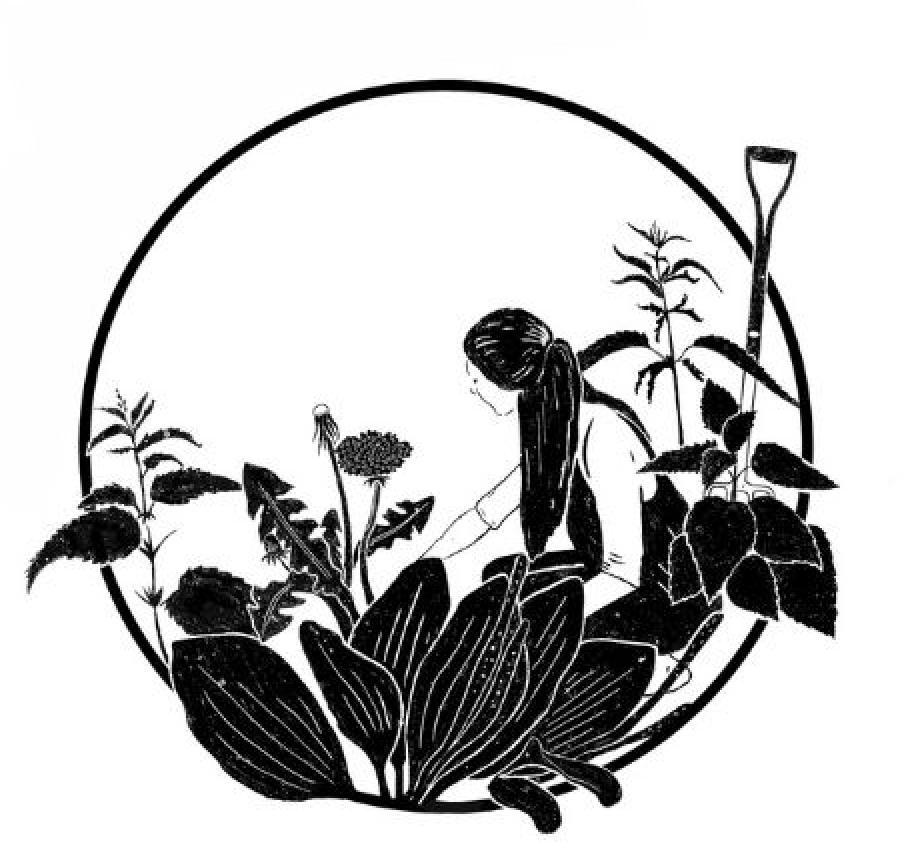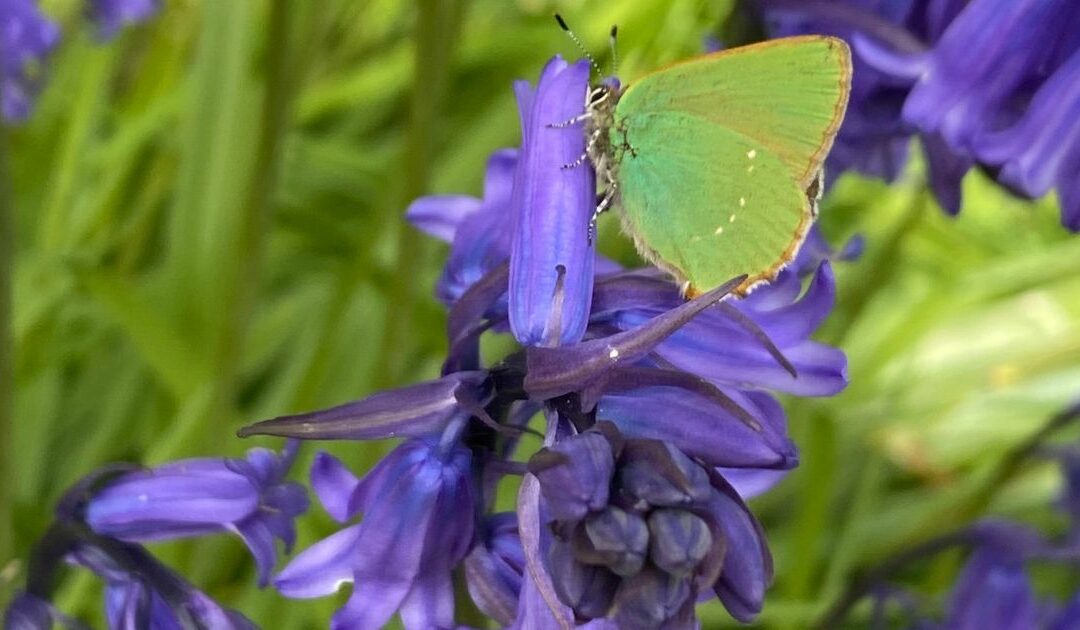May is a month of blossom. Even the full moon this month is called the Flower Moon. Here on the north coast of Ireland the apple trees are heavy with pink tinged white flowers. In our orchard, the sight of tree after tree crowned in such beautiful colour is a welcome start to the day as I make my way down to the polytunnels which are also situated in the orchard and are my place of work most mornings.
The hawthorn hedgerows which surround this field are about to blossom too. Like a living walled garden, the hedgerows become almost pure white once the hawthorn is in full show. At the moment each flower is still tightly furled in a popcorn like round bud, waiting to pop open to reveal the tiny but strongly perfumed hawthorn flower. These too are white and tinted with a shade of pink, like the apple trees.
The other tree blossom I welcome in May is the lilac. Heavily perfumed, the aromatic scent of this cone like cluster of pale purple flowers is so nostalgic- reminding me of grandmothers and the Victorian era. Being so far North, mine are just starting to flower and I eagerly wait and watch for the moment that they turn from dark purple buds to lilac flowers. Lilac has a rich folk history, stories were told that the ancient god of the forests, Pan, fell in love with a nymph called Syringa, to escape his amorous advances she turned herself into the shrub we know as Lilac. In the language of flowers lilac is said to represent the emotions associated with first love.
The flowers of certain trees, especially the hawthorn and lilac are not just for ornamental purposes, and I have plans to use them in my kitchen. Lilac, with its strong floral aroma works well as a syrup or infused honey. I particularly enjoy the method of making a flower honey -there is something very alchemic about pouring the thick golden honey over the flowers and waiting for the scent to become fastened into the liquid-preserving it for months.
I have a method for making herbal honeys in my new book The Garden Apothecary, which I will link in the show notes.
There’s something about flowers and food that really inspires the tastebuds and the imagination. Exquisitely beautiful placed onto cakes or sprinkled over salads they make everything look like a true celebration. However, there is a lot more to edible flowers than just a garnish or cake decoration. Edible flowers have a rich history and a plethora of uses in the kitchen.
The tradition of using edible flowers and petals in our food has a long-standing history. In the 16th and 17th centuries using flowers in the kitchen was incredibly popular. We know that jams, jellies, flower infused vinegars, syrups, sugared flower pastes, flavoured drinks and crystallised flowers were all common place in the kitchens of that time. Salads were particularly en vogue too, the more elaborate ingredients the better! Leaves, roots, buds and of course blossoms and petals were all used in these salads and served as a centre piece on the table. In fact they even decorated the table itself with flowers, strewn across the table to add colour and interest.
There are so many ways in which to use edible flowers including as a decoration, crystallised, flower sugars, infused honey, jellies, jams, stuffed flowers, ice-cream, butters, syrups, oils, cordials, infusions both cold and hot, ice cubes, salads, vinegars, in curds, sorbets, pickles, wines and gin!
And when it comes to picking flowers make sure you are picking edible varieties and from non-sprayed plants. In general, the best time to pick edible flowers in on a dry, morning-this is going to ensure that the flowers will taste and look at their best. Don’t pick on rainy days as this will dilute flavour.
Some Spring edible flowers to look out for include:
- Apple Blossom
- Borage
- Calendula
- Wild Cherry Blossom
- Chive flowers
- Daisy
- Day Lily
- Dandelion
- Elderflower
- Forget me not
- Hawthorn
- Honeysuckle
- Lilac
Magnolia
- Nasturtium
- viola
- Primrose
- Rose
- Runner Bean flowers
- Strawberry flowers
- Sweet Violet
- Three Cornered Leek
- Wild Garlic flowers
While at eye level flowers takes dominance, at my feet the lawn is also a carpet of blossom. Daisies and dandelions thickly grow, like colourful polka-dots-manna to the bumble bees. The arrival of daisies happens to be perfect timing, as the weather becomes warmer, my children are rushing about outside and are in need of my daisy bruise balm that I concoct from the abundant daisy flowers. This is a simple recipe of daisies infused into oil then transformed into a salve using some beeswax. I believe there’s a recipe over on my instragram account which is @beckyocole.
May, with its natural hustle and bustle, has also taken me in it pace, hence the late release of this very episode! There is a myriad of jobs to keep me busy outside in my market garden and farm. There’s baby animals to tend to-lambs, baby goats, calves, chicks and piglets. There’s my seedlings, babies in their own right-that need constant care, potting on and planting out. The weeds are also growing thick and fast, and I try to keep on top of the bulk of them. For better or worse I find myself pulled into a whirlwind of activity, of practical jobs that keep my plate full, my hands busy and by the time night arrives, my body tired.
May is a month where spring is coming to an end, the transformation from winter to a season of growth, aliveness, warmth and light is complete. The nights are already shorter and the days becoming stretched out to almost a maximum. Nature is so busy, insects pollinating, birds mating, plants growing. It is a time of energy and bustle.

